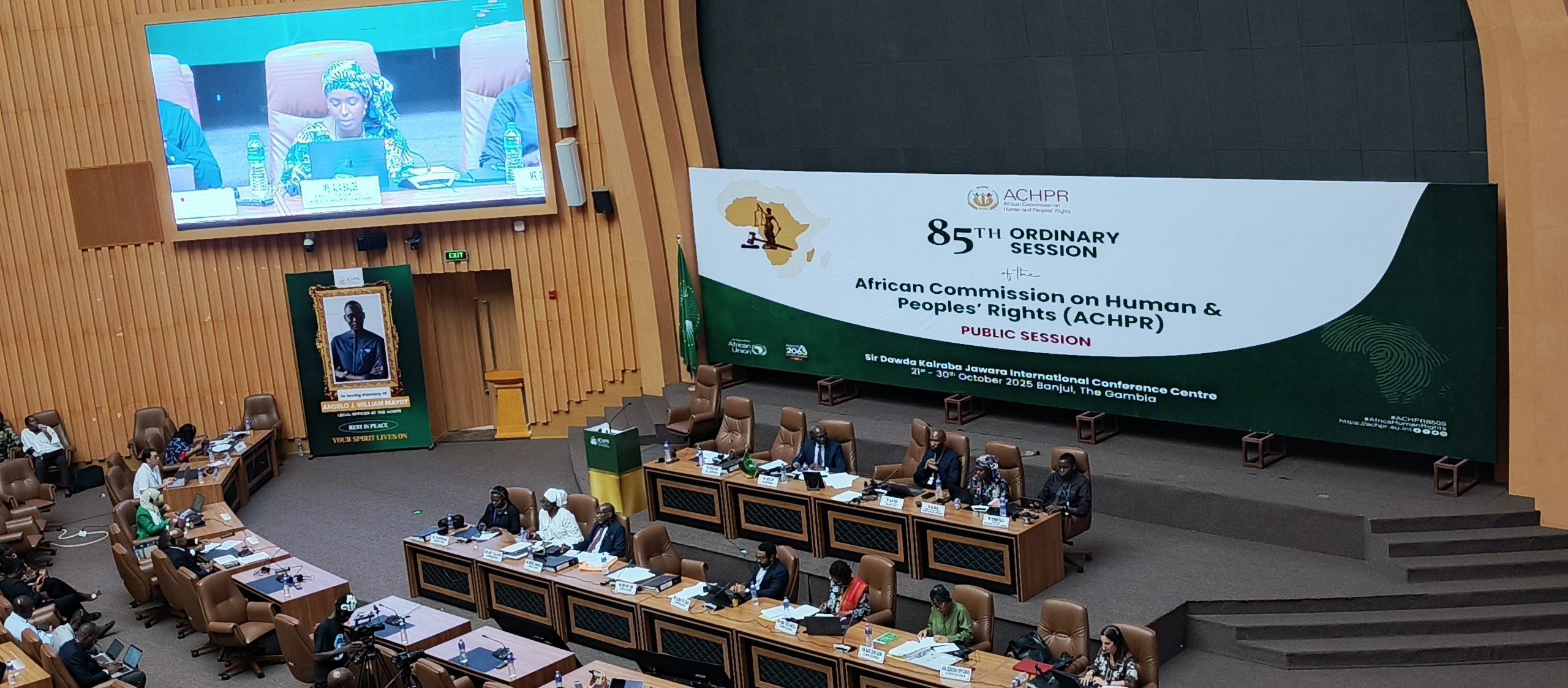Belarus – Global Centre for the Responsibility to Protect

Report on Human Rights Violations in Belarus and their Impact on Sustainable Development Goals
Introduction: A Crisis of Governance and Human Rights
Authorities in the Republic of Belarus have engaged in widespread, systematic, and severe human rights violations, primarily targeting perceived political opponents. These actions, some of which may constitute crimes against humanity, represent a profound failure to uphold international commitments and a significant regression on the 2030 Agenda for Sustainable Development, particularly SDG 16 (Peace, Justice and Strong Institutions).
Systematic Dismantling of SDG 16: Peace, Justice and Strong Institutions
Since 1994, the government has systematically undermined the core tenets of SDG 16 by dismantling democratic and accountable institutions. This trend escalated dramatically following the contested presidential elections of 2020 and 2025.
Violations of Fundamental Freedoms and Access to Justice (SDG 16.3, 16.10)
- Suppression of Dissent: Protests against alleged electoral fraud in 2020 were met with brutal state violence. By mid-November 2020, approximately 25,000 people had been detained.
- Arbitrary Detention and Torture: Demonstrators, journalists, human rights defenders, lawyers, and trade unionists have been subjected to arbitrary detention, torture, and sexual and gender-based violence, in direct violation of the principles of justice and rule of law (SDG 16.3).
- Legislative Repression: The government has enacted repressive legislative reforms to criminalize dissent, restrict freedoms of assembly and expression, and expand state surveillance, directly contravening the protection of fundamental freedoms outlined in SDG 16.10.
- Erosion of Civil Society: A state-led “purge” initiated in July 2021 resulted in the closure of over 1,000 independent organizations, crippling the civic space essential for a peaceful and inclusive society.
Failure of Institutional Accountability (SDG 16.6)
The state’s security and judicial apparatus operates with complete impunity, undermining the development of effective, accountable, and transparent institutions.
- Perpetrators: State security forces, including the State Security Committee (KGB) and Interior Ministry troops, act under executive directives without independent oversight.
- Judicial Complicity: The judiciary has been instrumental in the campaign of repression, with politically motivated court cases increasing by approximately 1,200 from 2023 to 2024.
- Rejection of International Oversight: The government consistently rejects findings from international human rights bodies and obstructs independent monitoring, isolating itself from mechanisms designed to strengthen governance.
Targeted Assault on SDG 5: Gender Equality
The repression in Belarus has a distinct gendered dimension, constituting a severe setback for SDG 5 (Gender Equality). Women are specifically targeted for their political activism and role in civil society.
- Gender-Based Persecution: The UN Group of Independent Experts (GIE) documented severe reprisals, surveillance, and gender-based violence against women human rights defenders.
- Inhumane Conditions for Female Prisoners: UN bodies have raised alarms over the conditions in women’s correctional facilities, citing overcrowding, lack of medical care, public humiliation, and sexual violence. These acts may constitute gender-based persecution as defined by the Rome Statute, directly violating SDG 5.1 and 5.2.
Undermining SDG 10 (Reduced Inequalities) and SDG 8 (Decent Work)
The government’s policies have exacerbated inequalities and dismantled protections for workers, impeding progress on SDG 10 and SDG 8.
- Forced Displacement and Statelessness: An estimated 300,000 individuals have been forced to flee Belarus. The practice of trials in absentia and denial of access to identification documents for exiles creates de facto statelessness, undermining SDG 10.7 (Orderly and Safe Migration).
- Persecution of Vulnerable Groups: The climate of fear disproportionately affects ethnic and religious minorities, LGBTQIA+ individuals, and persons with disabilities, deepening societal inequalities (SDG 10.2).
- Suppression of Labour Rights: The systematic dismantling of independent trade unions and persecution of their members is a direct violation of the right to organize and protect labour rights as enshrined in SDG 8.8.
International Response and Accountability
The international community has responded to the deteriorating situation through various measures aimed at promoting accountability.
- Sanctions: The European Union, United States, and United Kingdom have imposed targeted sanctions on individuals and entities responsible for the repression.
- Monitoring Mechanisms: The OSCE has invoked its Moscow Mechanism multiple times, producing reports that confirm systemic abuses.
- International Justice: In September 2024, Lithuania referred the situation to the International Criminal Court (ICC), requesting an investigation into alleged crimes against humanity.
Recommendations for Restoring Progress on the 2030 Agenda
To address these profound human rights violations and realign with the Sustainable Development Goals, the following actions are necessary:
- For the Government of Belarus: Immediately release all political prisoners, cease politically motivated prosecutions, reform repressive legislation, and re-engage with international human rights mechanisms to rebuild accountable institutions in line with SDG 16.
- For the International Community: Strengthen diplomatic pressure, expand support for exiled Belarusian civil society, and coordinate accountability efforts to uphold international law, reflecting the spirit of SDG 17 (Partnerships for the Goals).
- For International Justice Bodies: The ICC should open a formal investigation into crimes against humanity. UN Member States should pursue universal jurisdiction cases to ensure there is no impunity for torture, sexual violence, and enforced disappearances, thereby reinforcing SDG 16.3.
1. Which SDGs are addressed or connected to the issues highlighted in the article?
SDG 16: Peace, Justice and Strong Institutions
- The article extensively details the breakdown of peace, justice, and institutions in Belarus. It describes how President Lukashenko has “systematically dismantled democratic institutions,” leading to a state where there is a “complete absence of accountability.” The justice system is depicted as being “weaponized to suppress dissent,” with “politically motivated court cases” and the “denial of fair trial rights.” The state security forces operate with “complete impunity,” and there is “no domestic, independent oversight or redress mechanism,” directly contravening the core principles of SDG 16.
SDG 5: Gender Equality
- The article highlights a “gendered dimension of repression.” It explicitly mentions “sexual and gender-based violence” as a tool used against opponents. It notes that the persecution against “women human rights defenders” is severe and that female political prisoners endure “inhumane conditions,” including “sexual violence.” The article states that these violations against women “may constitute gender-based persecution,” which is a direct affront to the goals of gender equality and the elimination of violence against women.
SDG 10: Reduced Inequalities
- The issues described in the article are a clear violation of SDG 10. The government’s actions are a “deliberate, state-organized campaign of repression” targeting specific groups, including “political opponents, human rights defenders, journalists, trade unionists, lawyers,” and other vulnerable groups like “ethnic and religious minorities, LGBTQIA+ individuals and persons with disabilities.” This systematic persecution creates and exacerbates inequality. Furthermore, the article notes that up to “300,000 individuals have been forced to flee,” leading to “de facto statelessness” for many, a severe form of inequality and exclusion.
2. What specific targets under those SDGs can be identified based on the article’s content?
Targets for SDG 16: Peace, Justice and Strong Institutions
- Target 16.1: Significantly reduce all forms of violence and related death rates everywhere. The article describes “brutal state violence,” “torture,” “forced disappearances,” and the extension of the “death penalty,” all of which are directly contrary to this target.
- Target 16.3: Promote the rule of law at the national and international levels and ensure equal access to justice for all. The article shows a complete failure to meet this target, citing the “denial of fair trial rights,” “politically motivated court cases,” “complete impunity” for perpetrators, and the “arbitrary and punitive manipulation of law to suppress dissent.”
- Target 16.6: Develop effective, accountable and transparent institutions at all levels. The article describes the opposite, stating that “courts, law enforcement agencies and security services operate together to suppress opposition” and that there is “no domestic, independent oversight or redress mechanism.”
- Target 16.10: Ensure public access to information and protect fundamental freedoms, in accordance with national legislation and international agreements. This target is undermined by the government’s actions to “silence dissent,” restrict “freedom of assembly and association,” dismantle “independent media,” and shut down “over 1,000 independent organizations.”
Targets for SDG 5: Gender Equality
- Target 5.1: End all forms of discrimination against all women and girls everywhere. The article points to the violation of this target by describing “gender-based persecution” and the specific targeting of “women human rights defenders.”
- Target 5.2: Eliminate all forms of violence against all women and girls in the public and private spheres. The article directly relates to this target by documenting “sexual and gender-based violence” and “sexual violence” against female detainees and political prisoners as part of the state’s repressive tactics.
Targets for SDG 10: Reduced Inequalities
- Target 10.2: Empower and promote the social, economic and political inclusion of all. The regime’s actions actively work against this target by perpetrating a “purge” and a “cleansing of society” to systematically persecute and exclude anyone perceived as an opponent.
- Target 10.3: Ensure equal opportunity and reduce inequalities of outcome, including by eliminating discriminatory laws, policies and practices. The article explains that the government has adopted “a set of legislative reforms, introducing new criminal and administrative offences” and uses “repressive laws” specifically to create inequality and punish dissent.
- Target 10.7: Facilitate orderly, safe, regular and responsible migration and mobility of people. The situation described is the antithesis of this target, with an estimated “300,000 individuals” being “forced to flee” into exile, where they face “continued judicial harassment” and “de facto statelessness.”
3. Are there any indicators mentioned or implied in the article that can be used to measure progress towards the identified targets?
Indicators for SDG 16
- Indicator 16.10.1 (Number of verified cases of killing, kidnapping, enforced disappearance, arbitrary detention and torture of journalists, associated media personnel, trade unionists and human rights advocates): The article provides concrete numbers that serve as direct indicators of failure. These include “approximately 7,000 protesters and bystanders were detained” between 9-12 August 2020, a number that grew to “around 25,000” by mid-November; “over 1,000 independent organizations” shut down; and “1,175 political prisoners currently in custody” according to the Viasna Human Rights Centre. The increase in politically motivated court cases by “approximately 1,200” from 2023 to 2024 is another quantifiable indicator.
Indicators for SDG 5
- Indicator 5.2.2 (Proportion of women and girls subjected to sexual violence by persons other than an intimate partner): While not providing a statistical proportion, the article provides qualitative evidence for this indicator. It reports on “sexual and gender-based violence” and “sexual violence” perpetrated by state actors (security forces, prison authorities) against detained women, particularly those in “women’s correctional colonies.” Reports from UN bodies documenting this violence serve as an evidence-based indicator.
Indicators for SDG 10
- Implied Indicator for Target 10.7 (Number of refugees and internally displaced persons): The estimate that “up to 300,000 individuals have been forced to flee” Belarus is a direct and powerful indicator of forced displacement driven by persecution and inequality, showing a failure to facilitate safe and orderly mobility.
- Implied Indicator for Target 10.3 (Existence of discriminatory laws): The article’s mention of the government adopting “repressive laws,” expanding the “death penalty,” and abusing “counterterrorism and so-called anti-extremism laws” to persecute opponents serves as an indicator of state-sanctioned discrimination. The use of “Article 411 of the Criminal Code, which allows indefinite extension of prison sentences,” is a specific example.
4. Create a table with three columns titled ‘SDGs, Targets and Indicators” to present the findings from analyzing the article. In this table, list the Sustainable Development Goals (SDGs), their corresponding targets, and the specific indicators identified in the article.
| SDGs | Targets | Indicators |
|---|---|---|
| SDG 16: Peace, Justice and Strong Institutions |
|
|
| SDG 5: Gender Equality |
|
|
| SDG 10: Reduced Inequalities |
|
|
Source: globalr2p.org

What is Your Reaction?
 Like
0
Like
0
 Dislike
0
Dislike
0
 Love
0
Love
0
 Funny
0
Funny
0
 Angry
0
Angry
0
 Sad
0
Sad
0
 Wow
0
Wow
0













































































